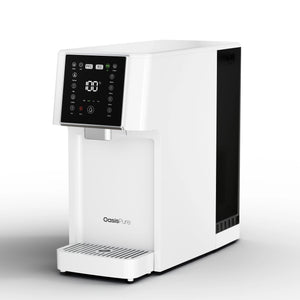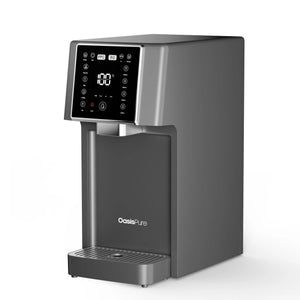Microplastics – tiny plastic particles smaller than five millimeters – are no longer a niche environmental issue. They’ve been found in rivers, lakes, oceans, and even in the air. But perhaps most alarming: researchers are increasingly detecting microplastics in drinking water. Whether from the tap or bottled, almost no glass of water today can be guaranteed free of these microscopic contaminants. What does this mean for our health, and how can we protect ourselves?
Where Do Microplastics in Drinking Water Come From?
Microplastics enter the environment – and eventually our water – through a wide range of sources:
-
Abrasion from clothing and tires
-
Breakdown of larger plastic waste
-
Residues from cosmetics and care products
-
Industrial processes and packaging waste
Urban water treatment plants do remove many of these particles, but not all. Bottled water is no exception: studies have shown that microplastics are often present in PET bottles – sometimes introduced during bottling, or through abrasion at the bottle neck when opening.
Are Microplastics Harmful to Human Health?
Research into the long-term effects of microplastics in the human body is still in its early stages. However, initial studies suggest that microplastics:
-
Can trigger inflammatory responses
-
Act as carriers for toxins and heavy metals
-
May penetrate cell structures, particularly in the gut and bloodstream
While much remains unknown, a growing number of experts warn that chronic exposure could pose serious long-term health risks.
How Can Microplastics Be Removed from Drinking Water?
Standard carbon filters or pitcher filters offer only limited protection. To effectively remove microplastics, finer filtration is required – such as that provided by reverse osmosis systems. These systems push water through a semi-permeable membrane that blocks even the smallest particles, down to 0.0001 microns.
Why a Countertop Reverse Osmosis System Is a Smart Choice
Modern, compact reverse osmosis systems – like those from OasisPure – provide a convenient way to eliminate microplastics and other contaminants right in your kitchen, with no complicated installation. They filter out not just microplastics, but also:
-
Heavy metals such as lead and mercury
-
Pesticides, pharmaceutical residues, and chlorine
-
Limescale and unpleasant tastes or odors
Many models even remineralize the water afterwards, ensuring a pleasant taste and balanced mineral content.
Conclusion: Better to Filter Than to Risk
Microplastics may be invisible, but the potential risks are real. If you care about clean, healthy drinking water, investing in a high-quality filtration system makes sense. A countertop reverse osmosis system is a practical, effective, and future-proof solution – for your home, your office, or even on the go.








